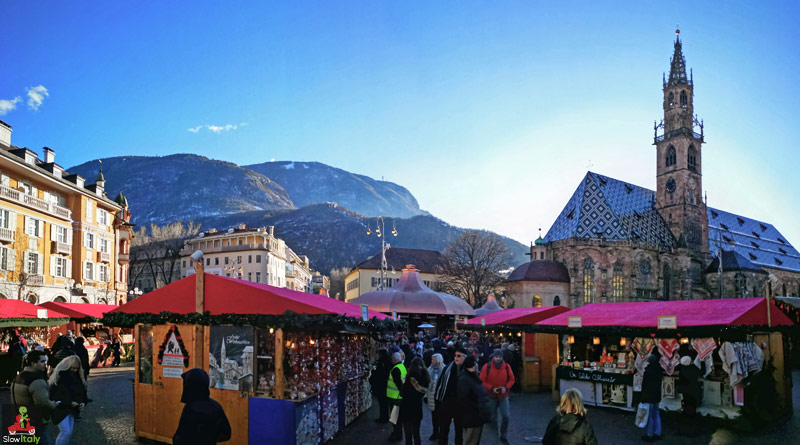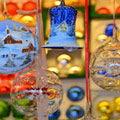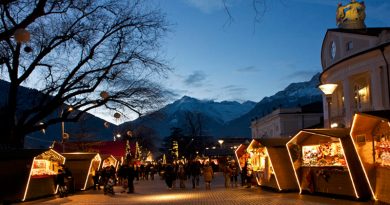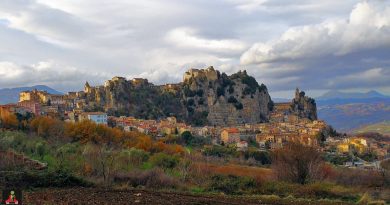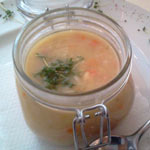Blitz visit to beautiful Bolzano
As the main gateway to the Dolomites, the town of Bolzano is regrettably often overlooked by international guests who usually head directly to the ski resorts. However, this interesting medieval town, which mixes Gothic influences going back to the 12th century with new buildings in Oltradige style, is worth a (short) visit if you have the time.
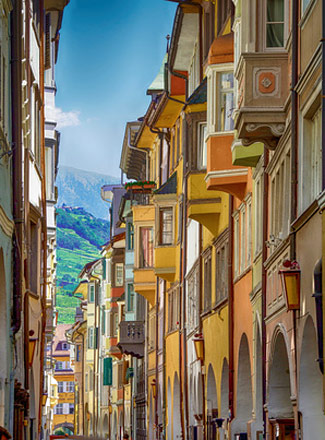
The typical Gothic structure is still visible in the colorful market-street, Via Portici, with (as the name indicates) its characteristic porticoed merchants’ houses.
Typically, at the time when it was laid out the streets’ workshops were accessed through the portico, while the families’ residences were upstairs.
In order to take up as little space as possible the houses were built narrow and deep, with rooms leading one into another, getting daylight from the inner courtyards.
The distinctive façades display overlapping styles, with stucco and refined wrought-iron decorations, and sandstone balustrades.
As the capital city of South Tyrol, Bolzano (Bozen in German) has always been an important trading centre between the Germanic North and Italian South and this confluence of cultures is still visible in Via Portici where German shops are mainly in the Northern and Italian ones in the Southern part.
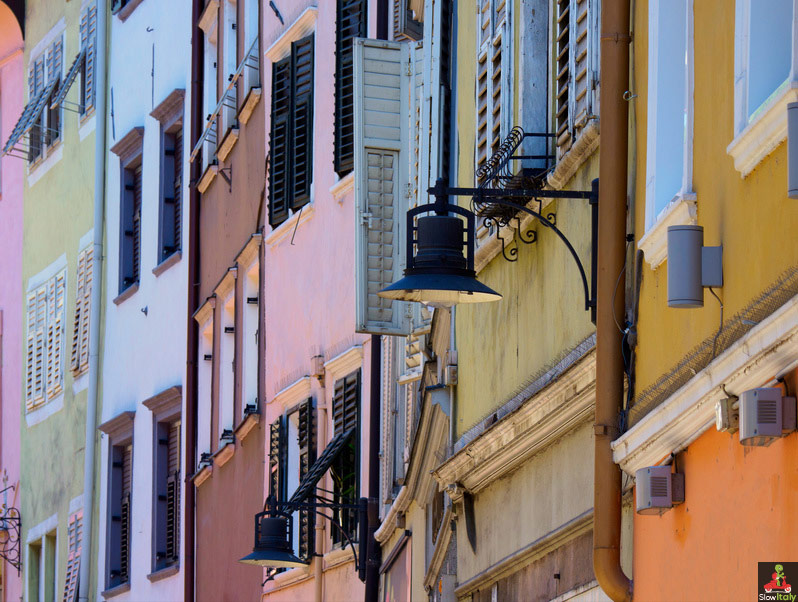
Another landmark is the Cathedral of Santa Maria Assunta in Romanesque and Gothic style, with its seemingly embroidered roof and finely chiseled bell tower. Story has it that for decades the inhabitants of Bolzano were reluctant to sound the bells out of fear that the delicately filigreed steeple might collapse.

On the north (right) side of the Cathedral is the Porticina del Vino (Leitacher Törl or wine door), a High Gothic portal, one of the finest in the entire Tyrol area, adorned with fine ornamental sculptures, among which a man and a woman dressed in typical Bolzano costume. The name of the door refers to a privilege granted to the pastor in 1387 to sell his wine from the Leitach vineyards at the church.
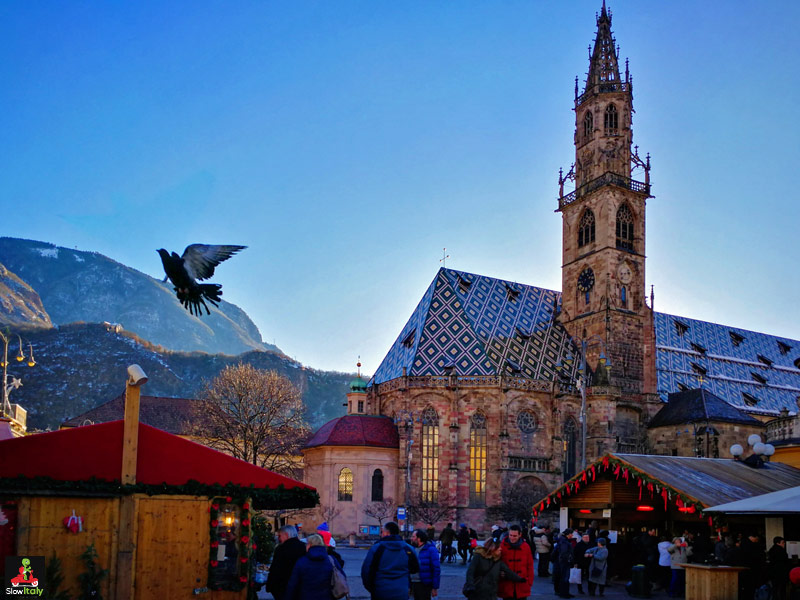
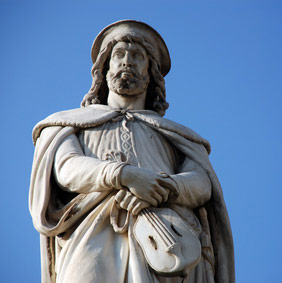
On the main square is the statue of Walther von der Vogelweide (1170-1230), one of the greatest medieval German poets, famous for his Minnesang, the love lyric that flourished during the Middle High German period. The main piazza was renamed after the Minnesänger in 1889.
For the real local flavor head to Piazza delle Erbe with its colorful daily market selling fruit, vegetables and flowers, as well as local cheeses and cured meat specialties (salumi), and with its buoyant beer houses all around.
In the Italian Journey, Goethe’s report on his travels to Italy from 1786–88, the author mentions how impressed he was by the city’s bustling market.
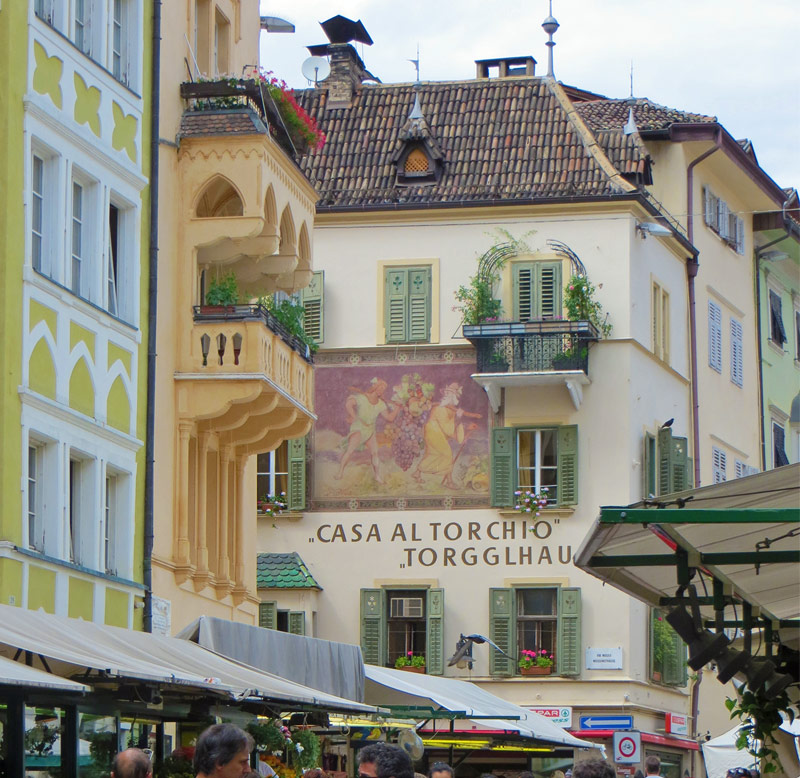
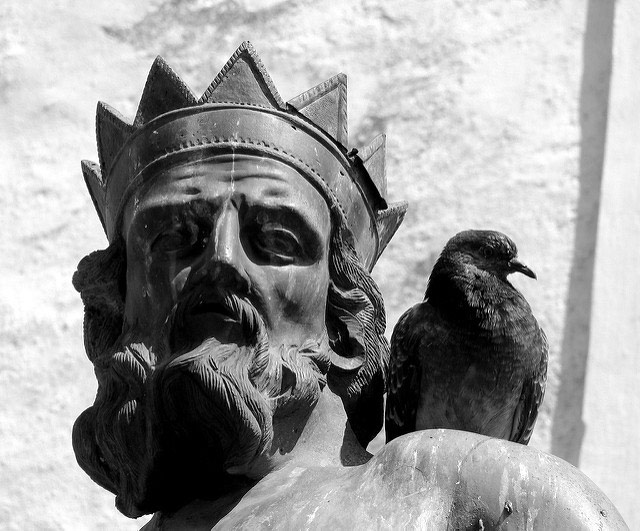
Worth seeing is also the Museo Archeologico (Museum of Archaeology), which has been especially created to house the mummy of Ötzi the Iceman, Europe’s oldest natural human mummy. Named after the Ötztal mountains where has was found in 1991, Ötzi is a unicum in the history of autopsy and archaelogy. What makes Ötzi unique is that, unlike other mummies which were found in burial sites together with funerary artefacts, he was discovered in the very spot where he was murdered 5,300 years ago, along with his clothing and the equipment he carried with him to survive in the harsh conditions of the high mountains. It was also one of the first times that a corpse of an adult man dating from the Copper Age (so before the first Egyptian pyramids were built) was discovered in a humid environment and preserved in a natural way (complete with his internal organs) due to exceptional circumstances, providing new elements about the living conditions at that time.
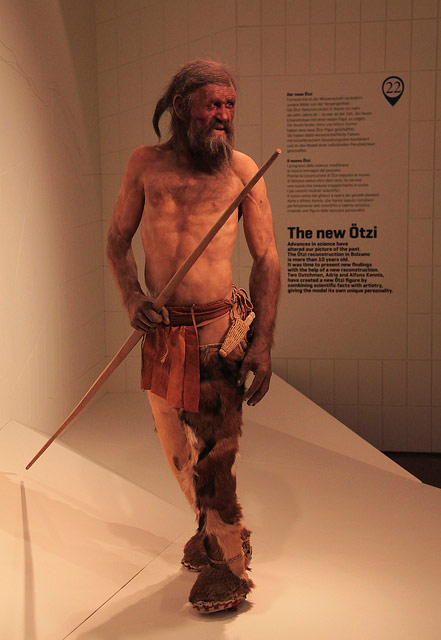
Last but not least, there is also Bolzano’s Christmas market from November 24h to January 6th, one of the largest Christmas markets of Italy and part of the Percorso delle Cinque Stelle (Road of the Five Stars), which includes the five most enchanting Christmas markets in South Tyrol, combining Germanic tradition with Italian style.
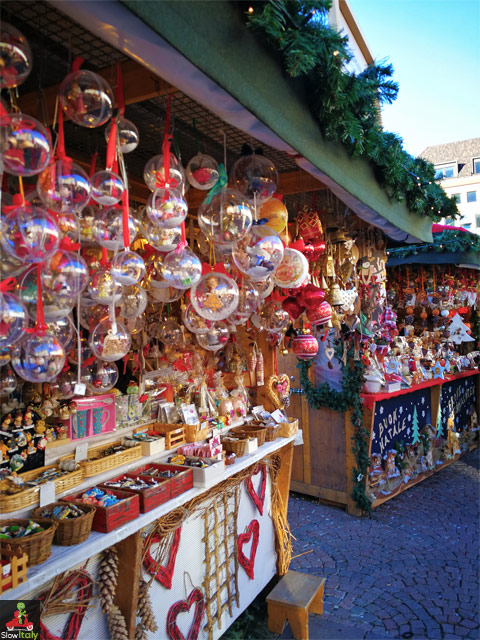
You might also like:
Top 8 Christmas markets in Italy
Photo credits: Via Portici and old town photos © Comofoto/fotolia; view of the Cathedral from the main square © Slow Italy; Walther von der Vogelweide © Lionello Rovati/fotolia; Piazza delle Erbe by Doug Knuth; Fountain of Neptune by Shamballah; Ötzi by Marko Forsten; Christmas market © Slow Italy.

